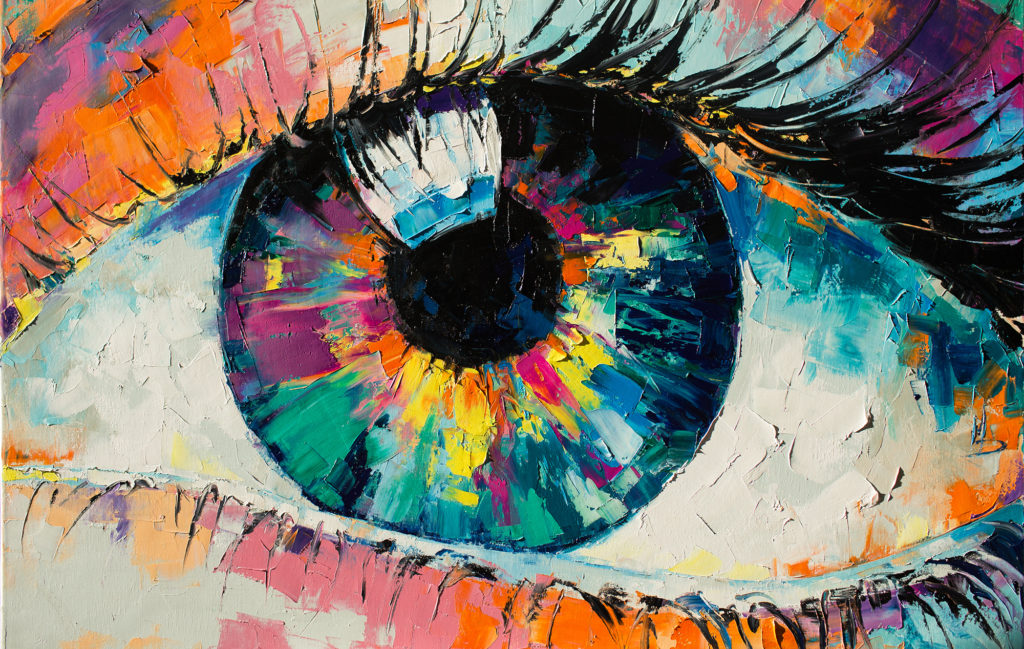The Role of Trump Art in Shaping Cultural Conversations Around Management
The Role of Trump Art in Shaping Cultural Conversations Around Management
Blog Article
Delving Into the Diverse World of Artistic Expression: From Surrealism to Abstract Realistic Look
In the world of creative expression, from the dreamlike landscapes of surrealism to the complex play of light and kind in abstract realistic look, musicians have continuously pressed the borders of imagination and imagination. Each movement holds a special lens where the world is watched and translated, supplying a glimpse right into the midsts of human feeling, understanding, and believed. As we check out the complex world of art, we exist with a tapestry of designs, methods, and viewpoints that test our understanding and provoke consideration. The journey with these varied kinds of artistic expression guarantees to unwind a rich tapestry of aesthetic narration and intellectual questions that mesmerizes the mind and mixes the heart.
Surrealism: Letting Loose the Subconscious
Surrealism, an avant-garde artistic motion of the 20th century, looked into the midsts of the subconscious, introducing a globe of dream-like images and unique juxtapositions. Pioneered by artists like Salvador Dali, René Magritte, and Joan Miró, Surrealism looked for to test the conventional ways of seeing and understanding art. Via methods such as automatism and dream analysis, Surrealist musicians intended to tap into the subconscious mind to disclose covert realities and needs.
Among the vital aspects of Surrealism was the emphasis on the illogical and the extraordinary. By integrating unforeseen components in their jobs, Surrealist artists aimed to produce a sense of disorientation and surprise in the customer. This interruption of reasoning and reason was implied to prompt a much deeper exploration of the subconscious and the secrets of the human psyche.
Abstract Realistic Look: Redefining Perception
Challenging typical imaginative limits, Abstract Realism redefines understanding through the combination of well-known elements with abstract kinds. This ingenious strategy to art combines the representational precision of realism with the creative flexibility of abstraction, supplying audiences an one-of-a-kind aesthetic experience that prompts them to examine their assumption of fact.
In Abstract Realism, artists strive to capture the significance of their subjects while additionally instilling their collaborate with a sense of deepness and intricacy through abstract components. By blending the aware of the strange, these musicians welcome target markets to engage with their items on several degrees, urging them to explore the nuances of structure, color, and kind.

Cubism: Fragmentising Reality
Utilizing fragmented viewpoints and geometric forms, Cubism transformed the artistic depiction of reality in the very early 20th century. This strategy not just deconstructed reality yet additionally emphasized the flatness of the canvas, leading the way for future abstract art movements.

Cubism can be classified into two primary stages: Analytical Cubism, defined by monochromatic color design and elaborate, fragmented forms; and Synthetic Cubism, which integrated collection components and brighter colors into the make-ups. Through these distinct stages, Cubism influenced not only painting yet likewise sculpture, layout, and architecture. trump art. Its effect resounded across the art world, motivating musicians to discover new methods of interpreting and representing the globe around them
Expressionism: Emotions on Canvas
Checking out the midsts of human feelings with vivid and expressive brushstrokes, Expressionism emerged as an extensive imaginative motion in the early 20th century. Unlike previous art activities that concentrated on illustrating the external globe, Expressionism explored the internal realm of the musician's psyche, aiming to evoke raw feelings and provoke visceral feedbacks from customers.
Expressionist musicians, such as Edvard Munch, Egon Schiele, and Emil Nolde, denied standard concepts of charm and realism Discover More Here for misshaping form and color to share subjective sensations. Using overstated brushwork, vibrant colors, and altered figures helped produce a feeling of worry, alienation, or passion in their jobs.
One of the most popular instances of Expressionism is Munch's "The Scream," which records the extreme stress and anxiety and misery of modern life through its swirling, altered number against a blood-red skies. Via their emotionally charged works, Expressionist artists looked for to challenge traditional artistic standards and provide a home window into the rough depths of the human heart.
Contemporary Art: Progressing Perspectives

Among the specifying attributes of contemporary art is its consistent evolution and capacity to adapt to changing social landscapes. Musicians are progressively incorporating modern technology into their practice, blurring the lines in between the physical and digital worlds. This blend of mediums permits for cutting-edge methods of storytelling and engaging with target markets in a more interactive way.
Moreover, contemporary art often acts as a platform for social discourse, addressing pushing concerns such as identification, politics, and the atmosphere. Musicians are using their work to trigger essential discussions and prompt idea, shedding light on the complexities of the world we live in. As perspectives remain to advance, contemporary art continues to be a significant and vibrant pressure in shaping our social landscape.
Final Thought
Finally, the globe of imaginative expression encompasses a vast array of movements and designs, each with its very own distinct technique to conveying significance and feeling. From surrealism's exploration of the subconscious to abstract realism's redefining of understanding, and from cubism's fragmentation of fact to expressionism's portrayal of feelings, art remains to advance and test perspectives - trump art. Contemporary art mirrors the ever-changing globe we stay in, providing brand-new ways to interpret and comprehend the complexities of our reality
As we check out the diverse globe of art, we are provided with a tapestry of styles, methods, and ideologies that challenge our understanding and prompt consideration. Its influence reverberated throughout the art globe, inspiring artists to explore new ways of interpreting and standing for the click resources globe around them.

Report this page